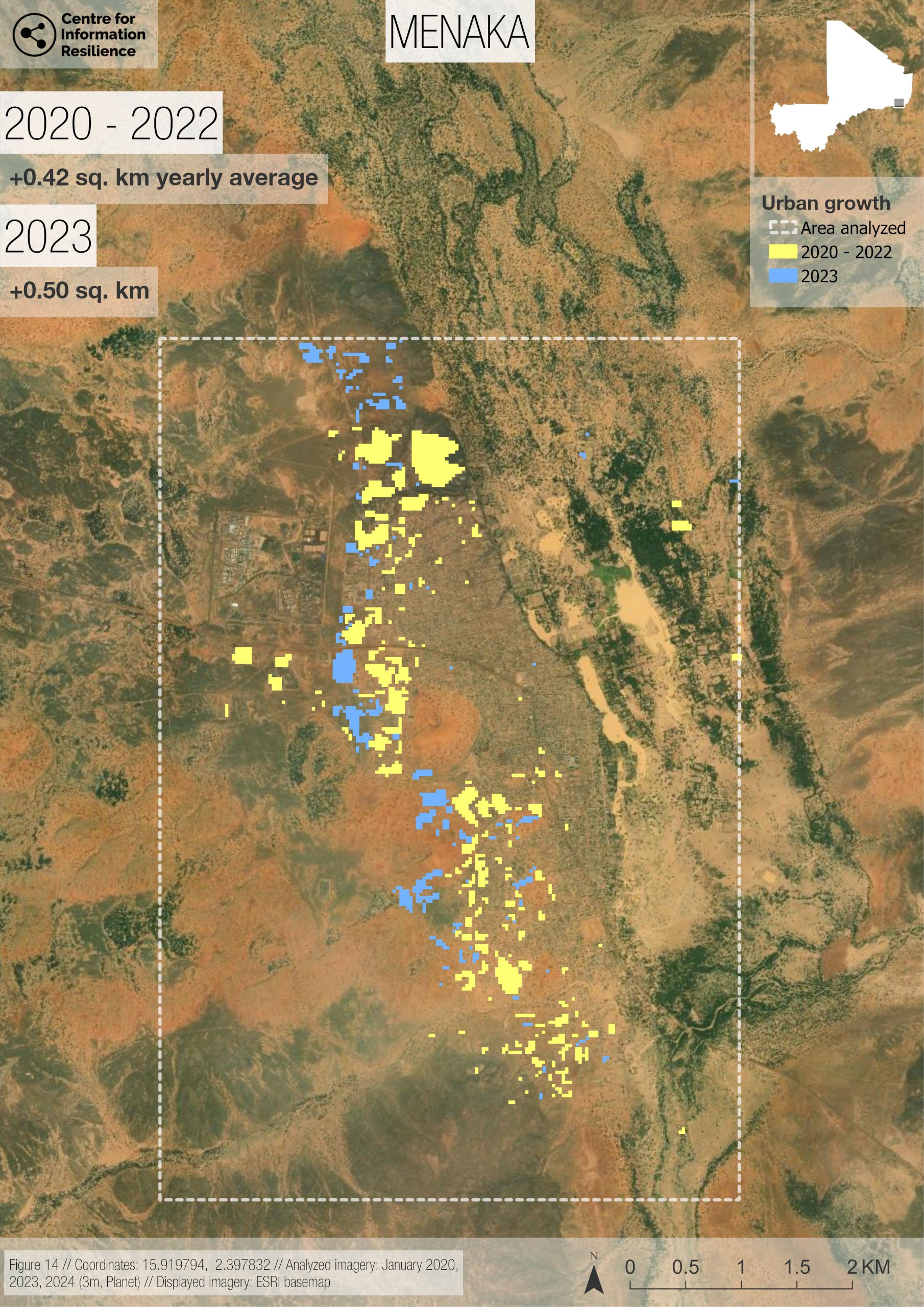Following more than a decade of regional political violence and rising violent extremist organisations (VEOs), hundreds of thousands of Malians are currently displaced from their homes. The effects of climate change have compounded insecurity and contributed to further population movements.
While international organisations such as the United Nations High Commissioner for Refugees (UNHCR) and the International Organisation for Migration (IOM) help monitor these phenomena, as of publish date March 2024, there was no publicly available up-to-date, detailed, and comprehensive dataset linked to large scale displacements both within Mali and into neighbouring countries over the year prior.
This report uses satellite imagery analysis to complement existing data, shedding light on displacement in Mali over the course of 2023, including large scale population movements following the Malian Armed Forces (FAMa) and Wagner’s entry into Kidal in November 2023.

Key findings include the following:
- Out of the investigated locations in border areas and neighbouring countries, satellite imagery analysis shows that the Tinzaouaten (Mali) and Mbera (Mauritania) settlements received the most displaced Malians over the past year.
- Among Malian cities of interest, satellite imagery assessment indicates that Ménaka and Ansongo stand out as the localities with the most urban growth in 2023. Ménaka and Gossi also underwent higher urban growth in 2023 than in previous years. This suggests that these towns were probably affected by relatively important internally displaced person (IDP) influxes.
- Higher rates of urban expansion were detected in locations with more insecurity, indicating that rural populations may be congregating in nearby cities where they may be less vulnerable to attack. However, rapid urbanisation may contribute to livelihood disruptions for rural families and labour-market disequilibrium in cities.
- The security situation for displaced Malians appears more stable in the four IDP/refugee settlements under investigation than in the cities examined within Mali.
- The majority of displaced persons in Mali are women and children. As of August 2023, children under the age of 18 accounted for 57% of the total IDP population in Mali, and women accounted for 63% of internally displaced adults aged 18 to 59.
